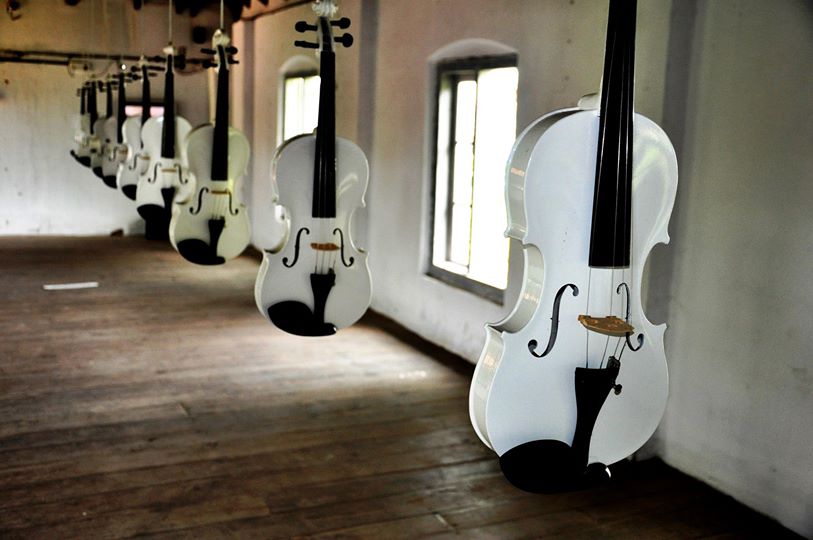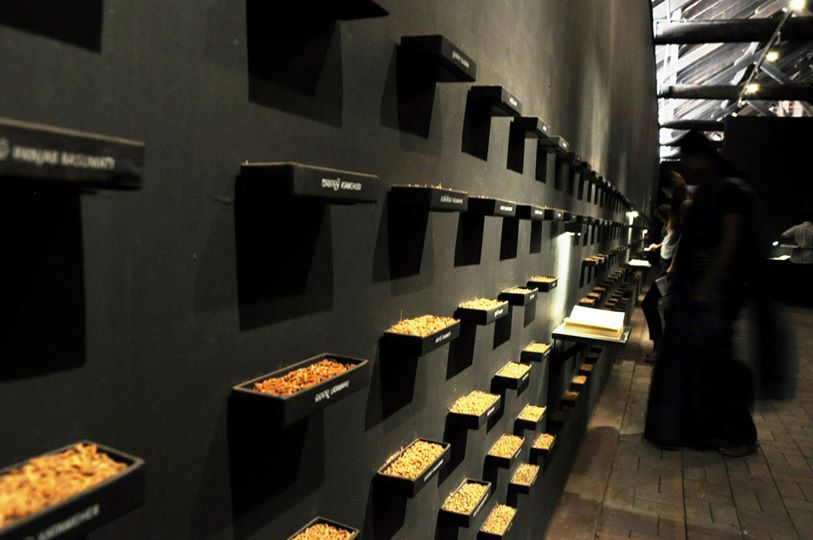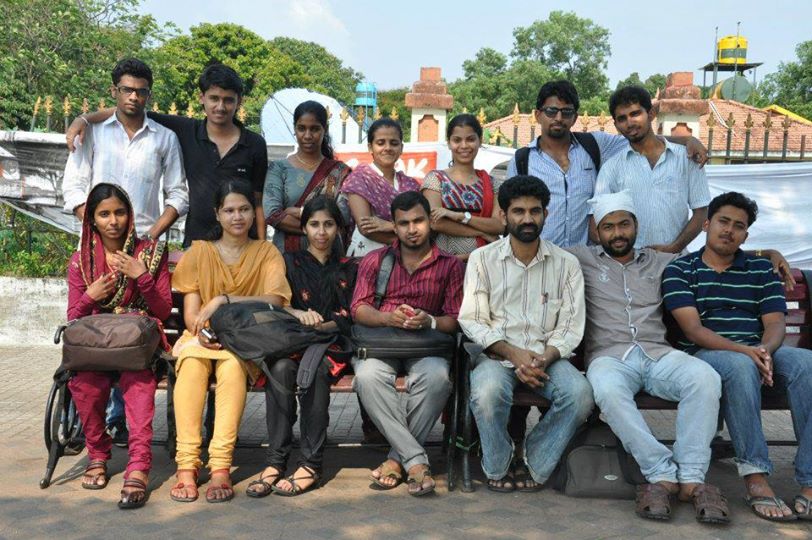Biennale’s Spiritual Solace
MUHAMMED NOUSHAD remembers the indescribable solace the first Kochi-Muziris Biennale of 2012 offered to the soul. Photographs by NIYAS HUSSAIN.
In the classic tradition, every great work of art quintessentially offers a refuge in peace, and a profoundly personal and yet universal spirit. It digs its way into your deeper inner self in strange and unexpected ways. You feel like being hugged by a friend who, you thought, would never come back to you. It’s all about a very subjective spirituality – the experience of love’s calmness and catharsis. Explaining it, you would surely fail. Like you’d find yourself a laughing stock while describing your love for someone you love really well. Silence is the best articulation at times; helplessly.
Despite the guaranteed recommendations from a few friends, I was not very hopeful about the Kochi-Muziris Biennale thanks to the local media coverage about the funding controversies. Misappropriation of public fund has always been an ‘art’, a very sophisticated and highly expensive art in a country like India. I went there, with skepticism and reluctance. And returned with a deeply moved soul, seeing the magnitude of the effort and display of art works, I didn’t think the money was wasted. But, the undying skeptic still complains of the extravagance; and the debate grows within.
We were a group of art lovers; a casual, naïve, humble team of learners. Many of us cursed ourselves for the poor art education we received or never received. It took me no time to realize that, as in the case of any other experience, you need to be with yourself to get into its inner core. A longing for loneliness started its fabulous attack, through those installations. All of them might not be genuine. Postmodernity allows you to be awkward, undivine. One of the best trials of an artwork’s worth is, perhaps, the subjective reflection it precipitates within you in a very solitary scale.Intrapersonal is the only communication that allows you to find yourself, to create meaning, in the case of art appreciation, too.
In an inescapable age of visuals that the Television and malls supply you freely, one often forgets to expect refreshing meanings and daring possibilities in visuals, paintings, sculptures etc. Virtually, catharsis has long back stopped occurring in art galleries, at least for me. May be my fault; ignorance and inexperience. But, the repeated disappointment in various places lets you take it for granted. That art has become just another commercial enterprise. A civilizational disconnect from the celebrated classic traditions. Artist alone can’t survive in an otherwise stupidly consumerist world.Needn’t s/he survive, too?But, should it be at the cost of independence or one’s inspirational spirituality? The fellowships and sponsorships harm or help, really? You often wonder, perhaps, advertisements are better. They are false, but they don’t pretend to be otherwise. And they also, at times, offer you hope through irresistible creativity.
Biennale brought back my fading hope in art works. I remember sitting in the room set by Angelica Mesti, listening to her citizens’ band. The unique spontaneity of the sounds she captured in Paris – the unnoticed, unheard, unheeded – and the splendor with which she chained them amazed me. In those four screens, those real life people created sounds that any learned composer would feel envy. In such loneliness, you miss everyone who listened to your loneliness.
At Moidu’s Heritage Plaza, walking through its antique varandhas, the board on a door, ‘Leave your shoes here’ was ambiguous. It was the title of an installation by Iranian artist HosseinValamanesh, though the imperative meaning was also intended. Barefooted, you enter a semi-dark room set with beautiful Persian carpetsthat remind you of prayer mats in a mosque; from the roof, transparent fabric cylinders, alternately arranged in black and white, are suspended to the floor. They do not touch the floor. Through white clothes, bright light falls on the carpets, making perfect circles there. It’s quiet, meditational. Even in the midst of a passing crowd, an enlightening solitude touches your soul. The silence it provides starts speaking inside you. You feel prayer in all great arts; a longing to be at the service of humanity.
Now, Anita Dube takes you to experience “Splitting the Subject”in a vast hall with four ladders inviting you to climb to the attic. Led by curiosity, you climb one of them, insert your head through a small square at the attic and see some fully packed sacks being stacked and a fully lit massive globe and some other geometrical figures. But, what strikes more is perhaps the audio you hear. Among a series of other noises and voices, I heard a woman sobbing her soul out in the background of a typical Kerala monsoon rain. Nostalgia attacks you, all of a sudden. Why should this woman be so sadly weeping? You wonder remembering every tharavaadu known to you and the silent eloquences women usually possess in such patriarchies. Your grandmother, or a childhood friend or a lover long forgotten returns to you. She refuses to leave for a long time. Nor does she wipe her tears.
The venues chosen for Biennale is the most striking aspect of all, particularly the historical Aspinwall House, Pepper House and Moidu’s Heritage Plaza. Those old structures in Fort Kochi give you the aura and aroma of the Arabian Sea all at once. In most of the rooms, the sea wind will keep patting on your hair, despite the summer’s humidity. The ventilators allow the sunlight beam into the ancient rooms. The installation placed in memory of the fishermen died in the sea was totally unexpected in such an environment. A series of mutually connected tiny rafts made of bamboos and plastic vessels, were decorated with the portraits of dead fishermen in the city. They floated along the coast, gently hitting the compound wall often, and the bells tied on top of the rafts rang rhythmically, translating the poetry the wind writes on the sea through the waves. Will the children or grandchildren of those poor fishermen come to see this, you wonder?
Ibrahim Qurashi’s installation ‘Islamic Violins’ was more than absorbing. In a long hall, you see 30 identically sized and simply painted violins hung from the roof. The whiteness of the violins and the wall are persuasive. The more simple the more deceptive. The installation by Jonas Staal of the Netherlands went through a controversy as he used the flags of several banned organisations in the world. The Biennale team painted them in black as a mark of protest. The quite trauma of loneliness that invades you while experiencing the smell, sound and visual of those many art works, you realize the magnitude of the effort. Great art shows you ways to the better understanding of life.
Originally written for Interactive: http://www.islaminteractive.info/content/biennale%E2%80%99s-spiritual-solace


